And I’m not afraid to quote poetry to justify it!
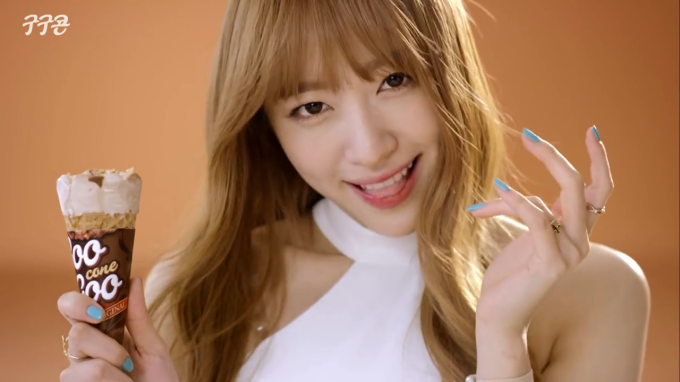 Estimated reading time: 6 minutes. Screenshot: YouTube.
Estimated reading time: 6 minutes. Screenshot: YouTube.
You the bride
are a form of grace,
your eyes honey.
Desire rains on your exquisite face.
Afroditi has honored you exceedingly.
Excerpt, Song to Groom and Bride, Sappho.
The word “sensual” has always been a favorite of mine, once I learnt it was brimming with sex. Even just to say it can feel like a carnal act, if you let it. Close your eyes, linger on the syllables as you would on the face of a lover, and the tip of your tongue teases you with memories of all the places it’s been—and hints at the pleasures still left to explore.
Foods that can similarly be luxuriated over then, lend themselves to sensual advertising. Take ice-cream. I don’t eat it like you see in the ads, and neither do you. But I get them. Being allergic to dairy, so not eating my first ice cream until I was seventeen, I really do relish the soy variety when it makes one of its rare appearances in supermarkets here.* I even have a bottle of Kahlua saved specially for just such occasions.
Not unlike Kahlua or even sex itself though, too much of the same thing can easily become boring and routine. That you and I can both roll our eyes at the notion of orgasming over ice cream, only points to how advertisers sexing it up is so routine as to be mindless cliché. Just so routine in fact, that by 2019 Baskin Robbins Korea seemed to have forgotten they were doing it at all, and were forced to withdraw and apologize for an ad where they’d replaced the usual woman with an 11-year-old girl wearing cosmetics.
And I do mean “the usual woman”:
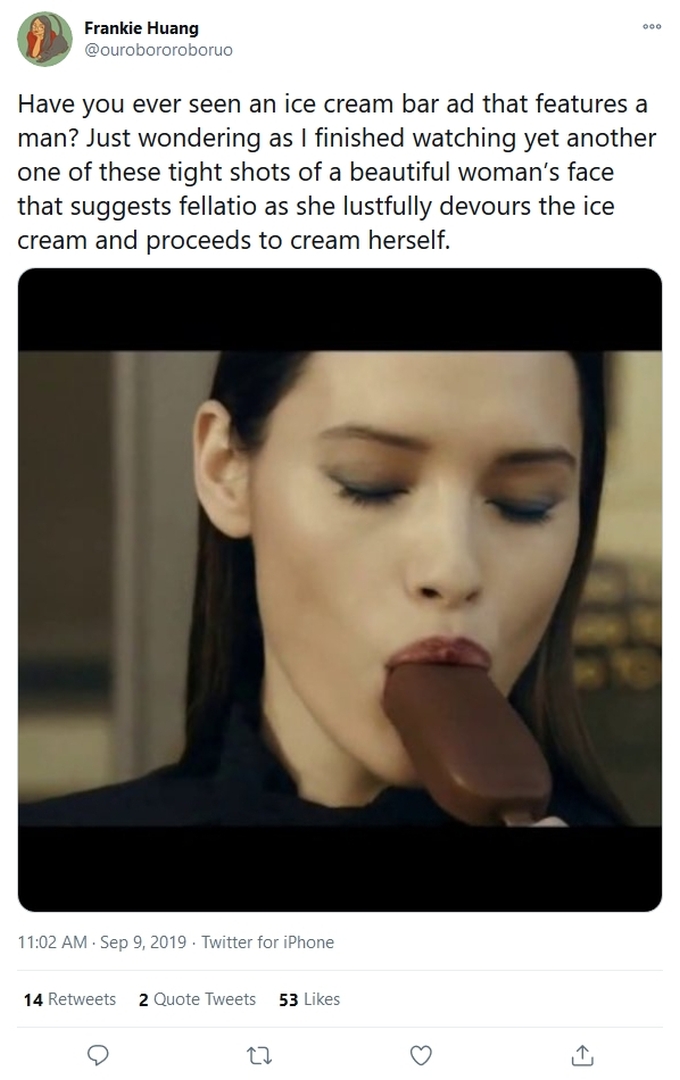 Source: Frankie Huang/@ourobororoboruo.
Source: Frankie Huang/@ourobororoboruo.
Issues this gender imbalance raises include the strong potential to infantilize women while simultaneously sexualizing girlishness, and the suggestion that women are just too damn hormonal to think rationally:
[There is a] powerful, symbiotic relationship between women and carnality, as indicated by the preponderance of erotic narratives in advertising addressing women. This is particularly overt in the advertising of products that are depicted as being endowed with the power to enable women to experience intense quasi-sexual pleasure from their consumption. Examples of such product categories include chocolate, luxury ice cream, biscuits, and shampoo. This is a world that reflects a perception of women as ‘consummate consumers’ who are ruled by their bodies and, as such, are less able than men to resist the lure of carnal pleasures (Belk 1998; Belk and Costa 1998).
Source: Pauline Maclaran and Lorna Stevens (2004),”Special Session: Gender and the Erotics of Consumption”, in GCB – Gender and Consumer Behavior Volume 7, eds. Linda Scott and Craig Thompson, Madison, WI: Association for Consumer Research, Pages: 1 to 14. (Download)
But I sense EXID fans are getting a little frustrated by this point. Posting an infamous, bawdy, 2012 Japanese commercial for Gligo’s Dororich Creamy Cafe Jelly in a moment is hardly going to help either.
There is a method behind my madness. First, I needed to take advantage of my recent purchase of a book on Sappho to establish some cultural capital, in the hope I’d have at least a shred of credibility remaining by the end of this post. For what male feminist/feminist ally would ever admit to being utterly transfixed by this?
I hear and share your numerous objections. Accept it not so much as an ad though, but for the sort porn it is, complete with five gravure idols (NSFW), addictive Benny Hill-like music, and blatant masturbation and ejaculation symbolism, and it’s so over the top that I can’t help but revel in its hilarity.
The Korean media couldn’t make that concession however. Take one of the first reporters to cover it:
“CF 영상 자체가 에로틱하다는 것이 그 이유다. 밝은 조명에 우유와 젤리가 섞이는 장면, 청순한 외모의 여성들 뿐이지만 남성들의 마음을 자극하는 요소는 다분하다.” (Herald Economy)
The reason the CF [is gaining tremendous popularity among Japanese men] is because it’s erotic. The scene in which milk and jelly are mixed in bright light, and only women with pure and fresh appearance, all these are enough to stimulate men’s hearts.
Contradicting themselves, even more stimulating elements were listed; alas, those did not include the symbolism of the spurting cream. Later reporters (or their cautious editors), if they mentioned the cream at all, only caused themselves more embarrassment in their Kakfaesque refusal to acknowledge the completely obvious:
“또 사방에선 알 수 없는 흰 액체가 날아온다.” (Korea JoongAng Daily)
“And white liquid is coming from out of nowhere.”
“게다가 우유를 상징하는 하얀 액체가 이 소녀들에게 날아들어 묘한 상상을 자극하게 하고 있어 일각에서는 비난이 쏟아지고 있다.” (The Chosunilbo)
“In addition, it is criticized because the scene in which white liquid that symbolizes milk is being poured over the girls is triggering strange imaginations.”
“또 사방에서는 우유로 보이는 흰 액체가 계속해서 날아든다.” (Herald Economy)
““And white liquid that seems to be milk is continuously being sprayed.”
I realize there may be official or unofficial rules in the Korean news media regarding acknowledging explicit content, even symbolism. Absence of evidence is not evidence of absence either, and it would remain a blessing to find an official news source that, in reporting on this commercial, hadn’t patronized its readers over something so trivial.
Be that as it may, the next reason, and finally, is because now you know exactly what went through my mind when I saw EXID’s commercial for Lotte’s Goo Goo ice-cream a few years later:
I only didn’t write about it at the time, because I expected the media and fans to immediately be all over it. Gligo’s Dororich Creamy Cafe Jelly commercial, after all, made quite the splash in social media when it came out. It took balls, I thought, for Lotte to be so brazen about the origins of its own very literal money shot.
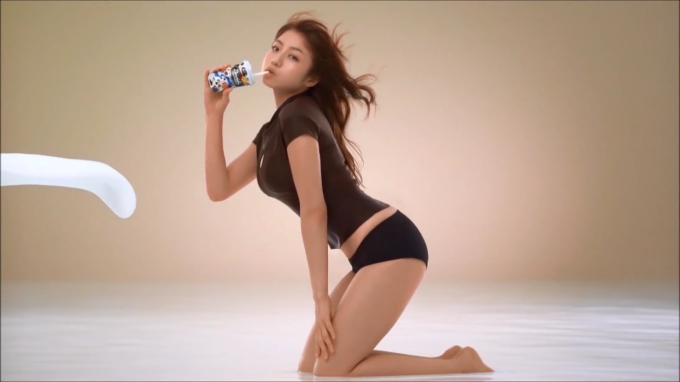 Screenshot: YouTube.
Screenshot: YouTube.
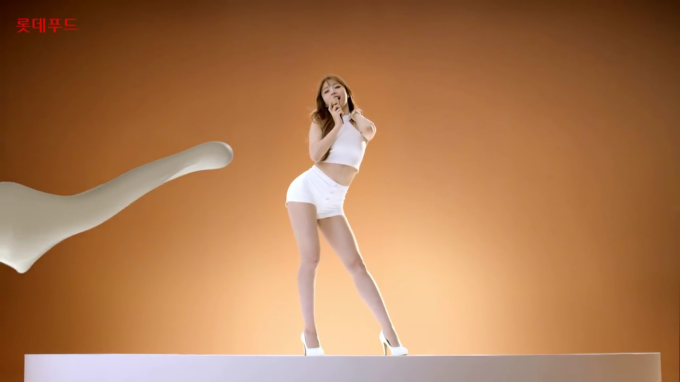 Screenshot: YouTube.
Screenshot: YouTube.
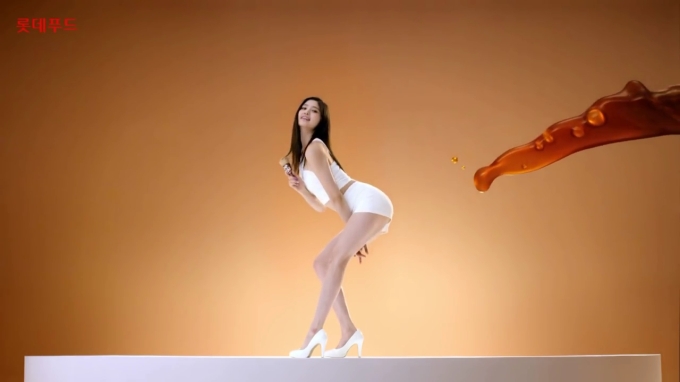 Screenshot: YouTube.
Screenshot: YouTube.
But, crickets. Whereas some reporters did point out the new, sexualized direction for Goo Goo’s advertising, most merely gushed about the endorsement choices in their typical advertorials. Social media too, or at least in respect to this commercial, seemed surprisingly reticent on the subject of ejaculation, and to have completely forgotten about the Creamy Cafe Jelly. By the time I realized people just weren’t talking about it, the moment for laying a world exclusive claim to this cosmic connection had passed.
I was loathe to end without a conclusion too. Perhaps on such an indecorous subject though, in which the innuendos came thick and fast as I typed (believe me, it’s harder to avoid them easier to just go with the flow get them off your chest roll with them), there wasn’t one to be made?
Still, the sexy ads and commercials will continue regardless, symbols of orgasming will always be an indelible part of that, and sex and K-pop are synonymous. Indeed, after the 2012 Japanese inspiration, then EXID’s 2015 sequel, 2018 saw JooE of Momoland step up in her commercial for Baker 7. Or rather, her “mother” and gardener:
I invite readers to offer any more examples, and to come to their own conclusions about them. To prepare for the 2021 follow-up, what do you think needs to be said about sexualization in ads, and about the gender imbalance in those selling chocolate, ice cream, biscuits, and shampoo? Is it necessarily bad if they depict orgasms? Please let me know in the comments!
Related Posts:
• “Fucking is Fun!”: Sexual Innuendos in Vintage Korean Advertising
*If you too are desperate for soy milk ice-cream in Korea, try specialist cafes and CU convenience stores. Supermarkets in my area have sometimes stocked it over the years, but always discontinued it after just a few months.
If you reside in South Korea, you can donate via wire transfer: Turnbull James Edward (Kookmin Bank/국민은행, 563401-01-214324)


I’m not saying anything new here, but I personally think the sexualization of people in ads is just a natural result of capitalism playing off of (and, in the process, strengthening) existing trends in society. Depicting orgasms in non-sex-related ads, in my opinion, isn’t worse than the ads sexualizing people in general. I do wish companies would move away from making these types of advertisements because, to me, it just seems cheap (but understandable/probably effective). As for the gender imbalance, I’d be curious about how sexualized women vs. sexualized men would be in ads. From what I’ve seen, “sexualized” men (i.e. muscular/shirtless people), at least in Western media, are more intended to appeal to men’s desire to be masculine than for women to be attracted to them (that part’s just apparently implied or assumed), so I wonder if it would be more of the same in Korea. That also raises the question, though, are the types of advertisements you mentioned here meant to appeal to (straight or bisexual) men, women, or both? Or does the company just want to say that their ice cream is really good, and it’s more socially acceptable for them to use women to illustrate that?
LikeLike
Thank you for taking the time to write a comment. That’s a lot to unpack there!
About depicting orgasms not being “worse,” I agree, but they’re definitely a step up.
With normal methods of sexualization in visual media (such as dances, poses, clothes, camera shots on body parts. and so on), I think they often simply don’t register with many people because they’re just so common. They’re the comfortable normal, nothing to ever worry about. When others raise issues about when that sexualization is problematic then, people can have an instinctive defensiveness at the challenge to their word view, and so may try to trivialize or dismiss the concerns—especially if they’re ideologically opposed to the kind of people who tend to kick up a fuss, such as feminists.
Depicting orgasms though, they’re still relatively uncommon (hence this post!), so I think most people would acknowledge them for what they are, and agree with criticisms if they’re warranted. Especially if the ads could be viewed by children.
Are criticisms warranted in the case of the ads in this post? I think so. I think—I know—sexualization* and orgasms can be portrayed originally, creatively, and in a feminist way. But these ads are none of these, and in the case of selling white liquids in particular, the ad world hasn’t exactly been shy about depicting them splashing onto women either. It’s just so transparent and utterly boring, IMHO.
(*For an example, I really wanted to find a billboard ad from New Zealand in the ‘90s, which depicted a [mostly ‘offscreen’] man and woman in bed, with the woman winking and the caption “Makes Bones Last Longer.” But it was just too long ago unfortunately!)
But you asked about the audience sorry. I don’t doubt for a moment it’s cishet/bisexual men. Not only because for both the Dotori and Goo Goo ads the news “reports” mentioned the huge increase in young men visiting their sites and/or taking selfies with the products (although in both cases I genuinely wonder how big and long-lasting the increase in sales really were), but also because the emphasis on the money shots is just soooo reminiscent of mainstream porn—i.e., almost entirely from a male POV, and focused overwhelmingly on the man’s pleasure. (Which is not to say it’s not important in feminist porn featuring men also, but it’s not the be-all and end-all.)
Thanks again!
LikeLike